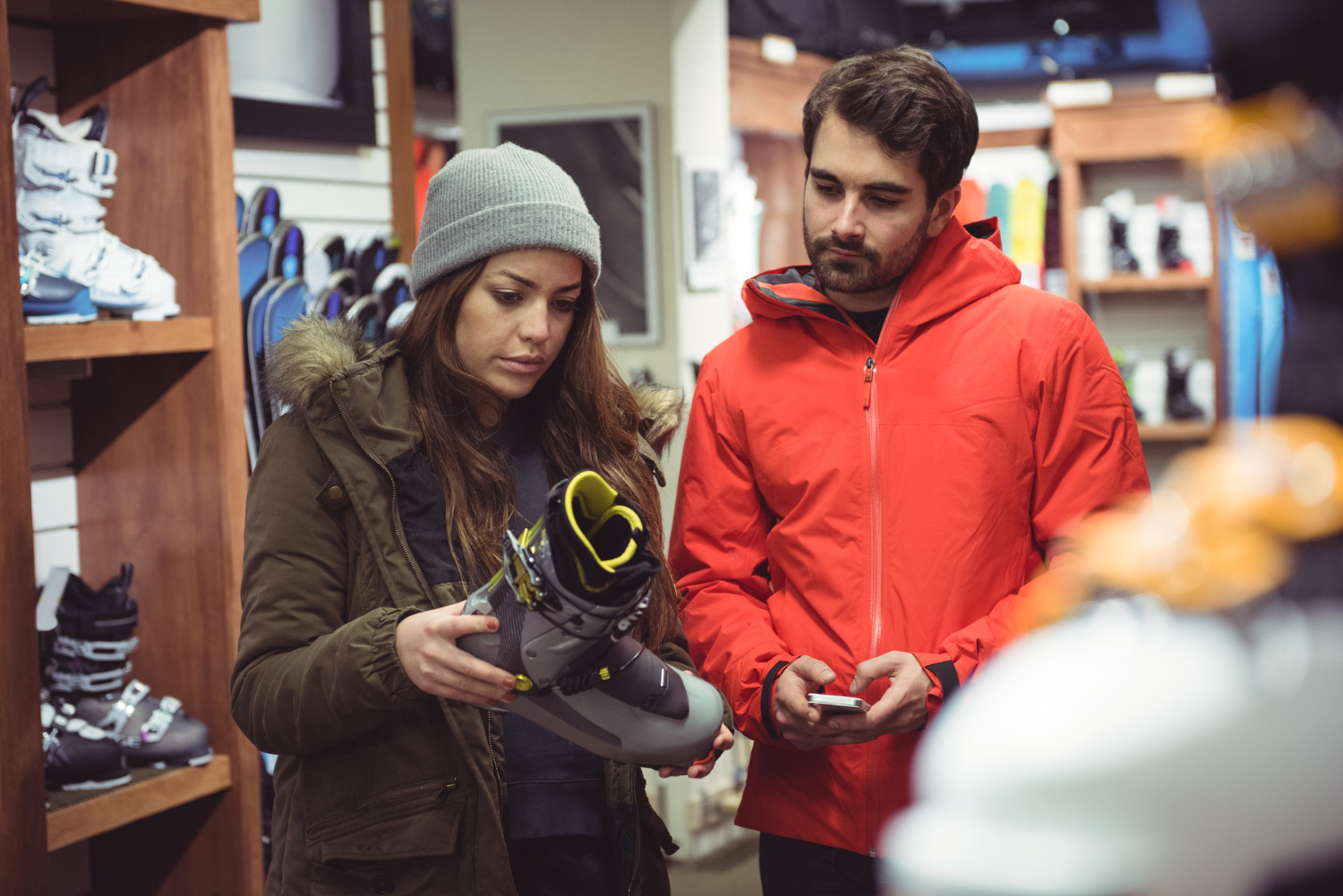
Taking the time to select the right boots is important. Here are some points that should not be missed out:
The first thing to do when choosing your shoes is to measure your feet with a shoe device. Don’t trust your normal shoe size, it is the centimeters that should guide you for your foot form. A professional at the store will tell you what models that are best.
It is not only the length of your feet that counts but also the width and volume your feet take in the boots. Certain shoes are bigger than others. A petite foot that swims in a large boot or a big foot that is very tight in a cramped boot only gives blisters and discomfort. Your precision at the moment of descending the slope depends on the mastery of your skis. And the mastery of your skis depends on your shoes. Your shoe is the extension of your feet and your skills will triumph.
In technical terms, we call this flex. Rigidity depends on what you want from your skis. Generally, for occasional practice for an intermediate skier, the standard flex of a shoe for normal ski is enough. For advanced skiers, you will need more or less rigid boots. With a flex of 900-110, your skis will be precise and sharp for competition. If you occasionally ski, a flex of 60-80 suffices.
For your feet, the thermos-formable slippers are really great. Your shoe adapts itself exactly to your feet, to its form and division of your weight. For sensible or thick feet, the thermos formable sole brings a great comfort. Your slipper thus becomes a second skin. Another advantage: you won’t have the need to adjust the binding of your slipper or your shoe.
If you need precision to make figures or slalom, pay attention to take boots that are sufficiently rigid to support you in lesser efforts and avoid exhausting your feet. If on the other hand you are a freerider, go for shoes that are relatively flexible and comfortable and you feel well in them.
There are really beautiful shoes that go great with your pair of skis. Colors, design… everything seems clear for you. But beware! It is not the esthetics that needs to guide your choice but your feet and skills. Pay attention to examine the way the boots close and open. We see quite a lot of skiers that grumble at the moment of entering in their boots because the bindings are hard to move. You don’t need to be compressed in your boots. It’s the contrary. A firm retention but flexible allows you to ski to the end of day.
When you are in the store, think of what you’ll find inside and that your foot is swollen because of the warmth and maybe the walk you might have taken to arrive. When you’re on the slopes, the cold will deflate your feet. You should feel well in your boots without being too at ease.
Take your skis with you when you’re going to choose your shoes because your bindings should be perfect for the boots. Its easier to choose a different model than to change your bindings.